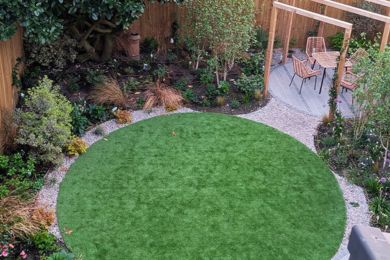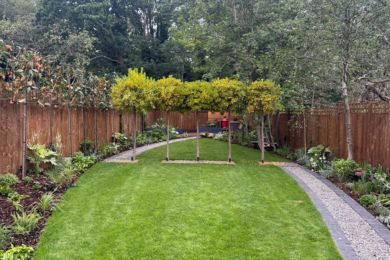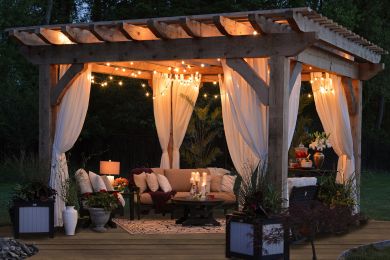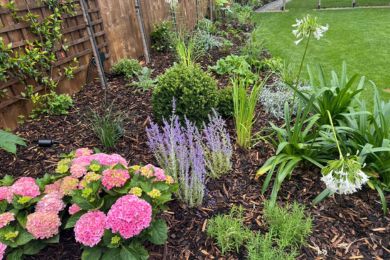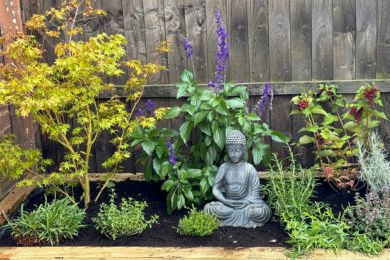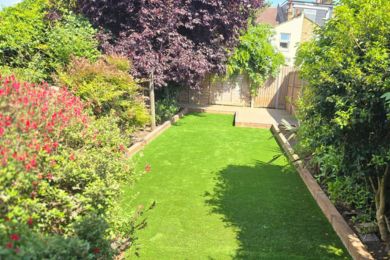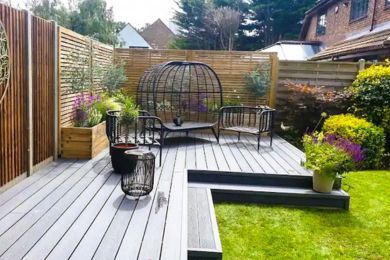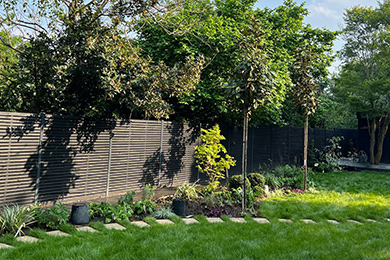Low-Water Gardening Ideas for Hot Summers
Summer is finally here, and with the long, hot days come additional preparations for your garden. While the hot, dry temperatures are ideal for spending time outdoors and enjoying your garden, they can cause issues for your plants. Watering is often required more frequently during the summer to keep your plants healthy and hydrated, but this can come at a great cost.
Excessive watering may seem like a good way to counteract the heat of the season, but it will cause your bills to be more expensive and can damage the planet. Balancing the needs of your garden with that of the planet for a safer, more affordable summer is possible with low-water gardening.
In this post, leading landscapers SilvaTree are sharing some of the ways you can incorporate low-water gardening this summer to keep your garden healthy and vibrant without the expense.
What Is Low-Water Gardening And Why Does It Matter?
It should come as no surprise that sustainability is a major concern for many homeowners. With climate change and the ongoing environmental issues we are dealing with, discovering ways you can reduce your impact on the planet can be extremely beneficial.
Gardening can be a costly activity both for your bank balance and the planet, due to the increased water usage, as well as chemical treatments required throughout the year. This is becoming more difficult to maintain as many local authorities put hosepipe bans in place, during drought conditions and throughout the summer, to reduce the pressure on essential resources.
Caring for your garden in the summer is more difficult than ever before, which is why many people are seeking an alternative. Low-water gardening is centred on creating a landscape that does not require as much water or care as traditional outdoor spaces. This does not mean you have to sacrifice planting or exceptional garden design, but rather incorporate low-watering gardening techniques for a cohesive, attractive environment that is easier to maintain.
Sustainable gardening practices are preferred by a lot of homeowners these days, not only because they take the guilt and pressure out of landscaping, but also make it more affordable. Low-water gardening in particular helps reduce water bills while also supporting healthy ecosystems and ensuring your outdoor space looks great all season long.
Low-Water Gardening Tips: Garden Maintenance Without The Pressure
There are various ways you can incorporate low-water gardening into your routine this summer, allowing you to take care of your landscape without the additional cost or pressure.
Instead of relying on traditional gardening methods or simply following a standard routine, there are some new ways you can keep your garden healthy and attractive all season long without wasting water. Some of the best low-water gardening techniques to try this season include:
Collect Rainwater To Reuse
Rainwater is a free, natural resource that can be used to keep your garden healthy and hydrated all season long. While the wet weather of the UK may ruin your summer plans on occasion, it is great news for low-water gardening, as it can be harvested and reused.
Using water butts, which can be installed directly onto your drain pipes, or water barrels, you can collect rainwater during showers and storms to be reused at a later date. With the occasional storms and rain showers, your garden can be hydrated for free, and collecting rainwater takes this to a whole new level. Rainwater can then later be used during dry spells to keep your lawn and plants healthy, allowing you to provide the essential care to your garden for free, as well as during hosepipe bans, which may otherwise prevent this kind of work.
Rainwater is an excellent way to begin low-water gardening and an accessible option for most people across the UK due to the ever-changing weather conditions.
Drip Irrigation Systems For Planting Beds
Drip irrigation systems are a great way to keep your garden hydrated and healthy throughout the year, and are especially useful for low-water gardening. Drip irrigation systems provide water directly at the roots of plants, ensuring maximum absorption.
By feeding water directly to the roots of plants, you can ensure that they get as much hydration as possible. Roots take hydration and nutrients from the soil and use their internal systems to pass them through the rest of the plant, supporting blooms and growth. Drip irrigation systems are especially useful during the summer because they prevent evaporation, ensuring your plants get as much of the water as possible.
Some drip irrigation systems can also be programmed to do the work automatically, making low-water gardening even easier to maintain. By investing in smart irrigation systems, you do not have to lift a finger, but ensure that your garden is being taken care of. Alternatively, you can use manual drip irrigation systems to provide better watering to your plants when required.
Drought-Tolerant Plants For Hot Summers
A great way to incorporate low-water gardening into your landscape this summer is by changing the plants you rely on. Incorporating drought-tolerant plants is a great way to reduce the need for watering in the first place, and allows you to enjoy a vibrant garden this season without the additional work.
Some staples of a low-water garden include:
- Lavender: A staple of British gardens, lavender is a lush plant that produces bright purple flowers, hardy foliage and a soothing fragrance throughout the year.
- Sedum: Similar in appearance to lavender, sedum also produces tall purple flowers and is just as hardy as it can thrive without constant watering and care, making it ideal for containers, flower beds and borders.
- Thyme: A great option for contemporary gardens, the lush green foliage of this herb can fill out containers and flower beds, or plant individually for scent and texture.
- Echinops: This clump-forming perennial offers unique bulbous flowers and will come back to your garden every season, making it a staple of low-maintenance and low-water landscapes.
Mulching To Lock-In in Moisture
Mulching is one of the most effective ways to take care of flower beds and planting areas, and is incredibly easy to incorporate. Using organic materials such as compost or wood chips, you can help maintain moisture in planting areas to reduce the need for constant watering.
A layer of organic mulch can provide essential nutrients to plants, directly at their roots, as well as lock in moisture within the soil. This operates as a protective layer, keeping the soil moist and habitable for a range of plants. As the organic materials decompose, they provide nutrients to your flowers and plants, supporting better blooms without any additional work from you.
As well as supporting low-water gardening, mulching can also help with weed suppression to ensure your garden looks great throughout the season. It is important to apply an even layer of mulch across planting areas, avoiding touching the trunks or stems of plants for maximum benefits.
Conclusion
In the height of summer, low-water gardening is a great way to keep your landscape healthy and vibrant without the additional costs. Caring for your garden during this season can be expensive work, both in terms of your water bill as well as the pressure on the planet.
Instead of relying on excessive water use this season, implement low-water gardening techniques such as harvesting rainwater and planting drought-tolerant flowers. With these tips, you can reduce the need for watering this season without compromising the health or visual appeal of your landscape.
For additional support and guidance, consider working with professional landscapers like SilvaTree. We are a leading team of garden designers and landscapers, offering a wide range of services to help you bring out the best in your garden – no matter the season.
Contact Us Today
Reach out to the team today to learn more about our services or request a quote.
FAQs
What is low-water gardening, and why should I do it?
Low-water gardening is centred on creating an outdoor space that uses water efficiently, helping to prevent waste, reduce pressure on natural resources and save money on your water bills. Typically, caring for a garden requires ongoing watering and use of raw, natural materials, but with some careful considerations during the planning and design phase, this can be reduced.
What are the best drought-tolerant plants for London gardens?
Some of the best low-water plants for gardens across London and the Home Counties include lavender, sedum, euphorbia, salvia, and ornamental grasses, as they thrive in hot, dry conditions. These plants require little watering yet provide plenty of colour and interest throughout the seasons.
How can I collect and reuse rainwater in my garden?
Harvesting rainwater is one of the best low-water gardening practices and can easily be done by using a water butt in your guttering. This will collect rainwater during storms and wet weather, where it can be used later to water your plants, clean gardening tools, or top up ponds.
